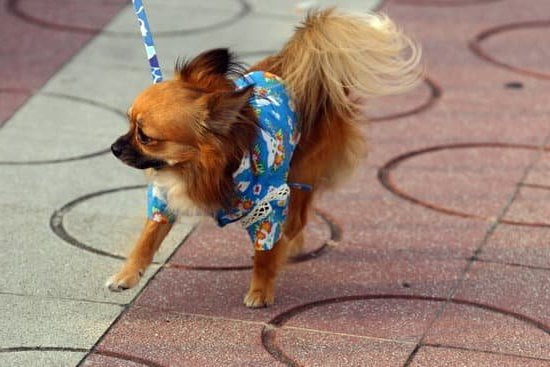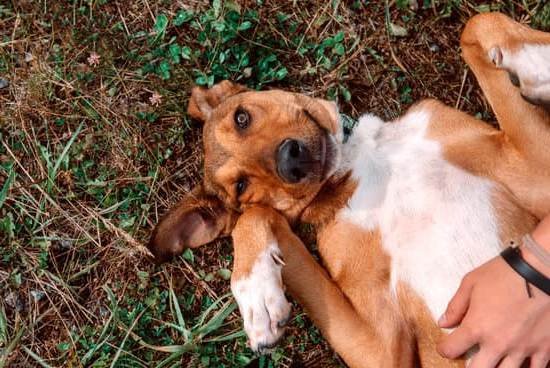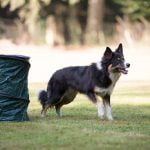Many dog owners believe that once a dog is used to living and doing its business outside, it cannot be successfully house trained. The question that often comes to mind is, “Is it possible to house train an outside dog?” Surprisingly, the answer is yes. With patience, consistency, and the right approach, even dogs who have spent most of their lives outdoors can be successfully house trained.
Despite the common misconception, there are numerous benefits to house training an outside dog. Not only does it improve the bond between you and your furry companion, but it also provides your pet with a safe and comfortable living environment indoors. House training can also prevent potential messes and damage due to accidents in the house.
However, transitioning an outside dog into a house-trained pet comes with its own set of challenges. Dogs may already have established habits from their time spent outside, making it important for owners to understand these challenges and be prepared to address them effectively. By following the right steps and being consistent in training efforts, even the most stubborn outside dogs can learn to adapt to indoor living.
Benefits of House Training an Outside Dog
House training an outside dog may seem like a daunting task, but the benefits that come with it are truly rewarding. One of the main advantages of having an outside dog that is also house trained is the convenience it provides. By teaching your outdoor pup to do their business inside when necessary, you won’t have to worry about rushing home to let them out or cleaning up accidents in the house.
Another benefit of house training an outside dog is the improved bond between you and your furry friend. When your dog understands and follows your expectations for behavior inside the home, it creates a sense of trust and respect in your relationship. This can lead to better communication and a stronger connection between you and your pet.
Additionally, house training an outside dog can also offer them more opportunities for socialization. If they are well-behaved indoors, you can bring them along to more places and events without worrying about accidents or misbehavior. This can lead to a happier and more fulfilled life for your outdoor pup, as they get to experience new environments and interact with different people and animals.
Understanding the Challenges
Unfamiliar Environment
One of the main challenges when house training an outside dog is the unfamiliarity of the indoor environment. Dogs that are used to being outside may not understand the concept of eliminating indoors. It may take time for them to adjust to the new rules and routines of going potty inside the house. This adjustment period requires patience, consistency, and understanding from the dog owner.
Established Habits
Another challenge is breaking the established habits of an outside dog. Dogs are creatures of habit, and if they have been going potty in the yard or outdoor space for a long time, it can be difficult to change that behavior. It will require dedication on the part of the owner to retrain their dog to go potty in designated areas inside the house. Consistency in training and positive reinforcement will be key in breaking these old habits.
Communication Barrier
Since dogs communicate through body language and cues, it can be challenging for them to understand verbal commands related to house training, especially if they are used to having more freedom outdoors. This lack of communication between dog and owner can lead to confusion and frustration during the training process.
Finding effective ways to communicate with your dog, such as using consistent signals or rewards, is essential in overcoming this challenge. Remember, patience and understanding are crucial when dealing with communication barriers during house training.
Steps to House Train an Outside Dog
House training an outside dog may seem like a daunting task, but with the right approach and consistency, it is definitely possible to successfully transition your outdoor pup to being inside the house. While there are some unique challenges that come with house training a dog that is used to spending most of their time outdoors, the benefits of having a house trained outside dog can greatly outweigh the initial difficulties.
To effectively house train an outside dog, it’s important to follow a structured and consistent routine. Here are some steps you can take to help your outdoor pup adjust to being inside the house:
1. Establish a designated bathroom area: Start by designating a specific spot outside where your dog can go potty. This will help them understand where they are supposed to eliminate when they are inside.
2. Create a schedule: Set specific times for feeding, potty breaks, and playtime. Consistency is key in helping your outside dog understand when they should expect to go outside.
3. Use positive reinforcement: Reward your dog with treats or praise every time they successfully go potty outside. This will help reinforce good behavior and encourage them to continue going in the designated area.
By following these steps and remaining patient and consistent, you can successfully house train your outside dog and enjoy all the benefits of having them indoors with you. Remember that every dog is different, so it’s important to tailor your approach to suit your individual pup’s needs and behaviors.
Importance of Consistency
House training an outside dog may seem like a daunting task, especially if they have been accustomed to living outdoors for an extended period of time. However, with the right approach and consistent training, it is indeed possible to successfully house train an outside dog. The key to success lies in patience, consistency, and understanding the unique challenges that come with transitioning an outdoor dog to indoor living.
Consistency is paramount when it comes to house training any dog, but it is especially crucial when dealing with outside dogs. These dogs are used to having free rein outdoors, so establishing a routine and sticking to it will help them understand what is expected of them.
Whether it’s setting specific times for feeding, walking, and bathroom breaks or using consistent commands during training sessions, a structured schedule will provide guidance for the dog as they adjust to their new environment.
Patience is another essential element in the house training process. It’s important to remember that every dog learns at their own pace and may require more time to adapt to new routines. For outside dogs that have little experience being indoors, the transition can be overwhelming at first.
By remaining patient and providing positive reinforcement for good behavior, owners can help their dogs feel more comfortable and confident in their new surroundings. Remembering that progress takes time and setbacks are normal will help maintain a healthy mindset throughout the house training journey.
Tips for Success
House training an outside dog may seem like a daunting task, but with the right approach and consistency, it is definitely possible. Here are some practical tips and tricks to make the house training process easier and more effective:
- Establish a routine: Dogs thrive on routine, so it’s important to establish a consistent schedule for feeding, potty breaks, and playtime. This will help your dog understand when and where they are supposed to go potty.
- Use positive reinforcement: Positive reinforcement is key to successful house training. When your dog goes potty in the designated area outside, be sure to praise them and offer treats as a reward. This will help reinforce good behavior.
- Supervise closely: To prevent accidents inside the house, it’s essential to supervise your dog closely when they are indoors. Consider using baby gates or crates to limit their access to certain areas of the house until they are fully house trained.
In addition to these tips, it’s important to be patient and consistent throughout the house training process. Remember that every dog is different, so what works for one dog may not work for another. By staying patient and persistent, you can successfully house train your outside dog and enjoy the benefits of having a well-behaved pet both indoors and outdoors.
Common Mistakes to Avoid
Many dog owners often wonder if it is possible to house train an outside dog. The truth is, while it may pose some challenges, with the right approach and consistency, it is definitely possible to successfully house train a dog that is used to being outside.
One common misconception is that outside dogs cannot be house trained because they are accustomed to relieving themselves outdoors. However, with patience and proper training techniques, even outside dogs can learn to understand the concept of going potty indoors in a designated area.
One of the key benefits of house training an outside dog is the convenience it brings to both the owner and the pet. By teaching your outside dog to use a specific spot indoors for their bathroom needs, you eliminate the hassle of having to constantly let them in and out.
This becomes especially useful during extreme weather conditions or when you have a busy schedule. House training your outside dog also helps create a cleaner living environment and strengthens the bond between you and your furry companion.
When house training an outside dog, one of the biggest challenges pet owners face is breaking their existing habits and teaching them new ones. Dogs that are used to being outdoors may find it difficult to adjust to holding their bladder or bowel movements until they are let inside.
It’s essential to understand these challenges and approach the training process with patience and positivity. Consistency is key in helping your outside dog transition from relieving themselves outdoors to using designated indoor areas for potty breaks.
| Benefits of House Training an Outside Dog | Challenges of House Training an Outside Dog |
|---|---|
| Convenience for both owner and pet | Breaking existing habits |
| Cleaner living environment | Adjusting to new routines |
| Strengthens bond between owner and pet | Transitioning from outdoor relief habits |
Case Studies
Many pet owners often wonder: is it possible to house train an outside dog? The answer is a resounding yes. While there may be some challenges in transitioning an outdoor dog to being house trained, with patience, consistency, and the right approach, it can be done successfully. In fact, many owners have shared their success stories of transforming their outside dogs into well-behaved indoor companions.
One such success story is that of Sarah and her Labrador Retriever, Cooper. Cooper had spent most of his life outdoors before Sarah decided to bring him inside. Initially, he had accidents in the house and struggled with understanding where he was allowed to go to the bathroom.
However, with positive reinforcement, consistent schedule for potty breaks, and crate training, Cooper eventually learned the ropes of being house trained. Today, he happily spends time indoors with Sarah and her family without any accidents.
Another inspiring case is that of James and his German Shepherd mix, Bella. Bella was used to roaming freely in the backyard but had never been inside a house before. James knew it would take some time and effort to help Bella adjust to being indoors.
By using reward-based training methods and giving Bella plenty of opportunities to go outside to relieve herself, James successfully house trained her. Now Bella enjoys lounging on the couch with James while maintaining good potty habits both inside and outside the house.
Overall, these success stories highlight that with dedication and a positive approach, it is possible to house train an outside dog. Each dog may have different needs and challenges, but by following a consistent routine, providing rewards for good behavior, and showing patience throughout the process, pet owners can help their outdoor dogs become well-adjusted indoor pets.
| Success Story | Key Takeaway |
|---|---|
| Sarah & Cooper (Labrador Retriever) | Positive reinforcement & consistent schedule led to successful house training |
| James & Bella (German Shepherd mix) | Reward-based training methods helped Bella adjust from outdoor to indoor living |
Conclusion
House training an outside dog may seem like a daunting task, but it is definitely possible with the right approach and mindset. While there may be challenges in transitioning a dog used to being outside to becoming house trained, the benefits far outweigh the difficulties. By taking the time to understand your dog’s needs and behaviors, as well as following a consistent training routine, you can successfully teach your outside dog to become house trained.
Consistency is key when it comes to house training any dog, but even more so with an outside dog. It may take some time and patience to establish new habits and routines, but with perseverance and positive reinforcement, you can achieve success. Remember to praise and reward your dog for good behavior, and never punish them for accidents or mistakes during the training process.
In conclusion, house training an outside dog is definitely possible with dedication and commitment. The bond between you and your furry friend will only strengthen through this process, leading to a happier and more harmonious living environment for both of you. So go ahead and give house training a try with your outside dog – the rewards are well worth the effort.
Frequently Asked Questions
Can You Train an Outdoor Dog to Be Indoor?
Training an outdoor dog to be indoor is definitely possible, but it requires patience, consistency, and positive reinforcement. Start by slowly introducing the dog to the indoors, rewarding good behavior, and using crate training to establish a routine.
How Do You House Train an Outdoor Dog?
House training an outdoor dog involves setting a regular schedule for feeding, potty breaks, and walks. Use positive reinforcement when the dog goes outside to potty and clean up accidents inside with an enzymatic cleaner to remove odors that may attract the dog back.
How Do You Stop a Dog From Peeing and Pooping in the House?
To stop a dog from peeing and pooping in the house, it’s important to first rule out any medical issues. Once medical problems are ruled out, focus on providing regular potty breaks outside, positive reinforcement for going outside, and supervision inside to prevent accidents. Consistency is key in this process.

Welcome to the blog! I am a professional dog trainer and have been working with dogs for many years. In this blog, I will be discussing various topics related to dog training, including tips, tricks, and advice. I hope you find this information helpful and informative. Thanks for reading!





